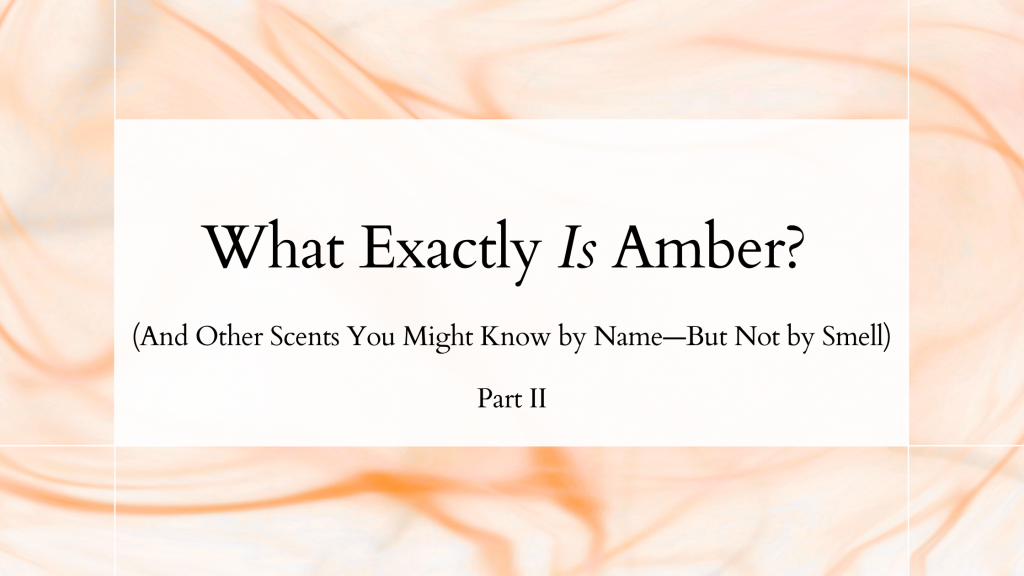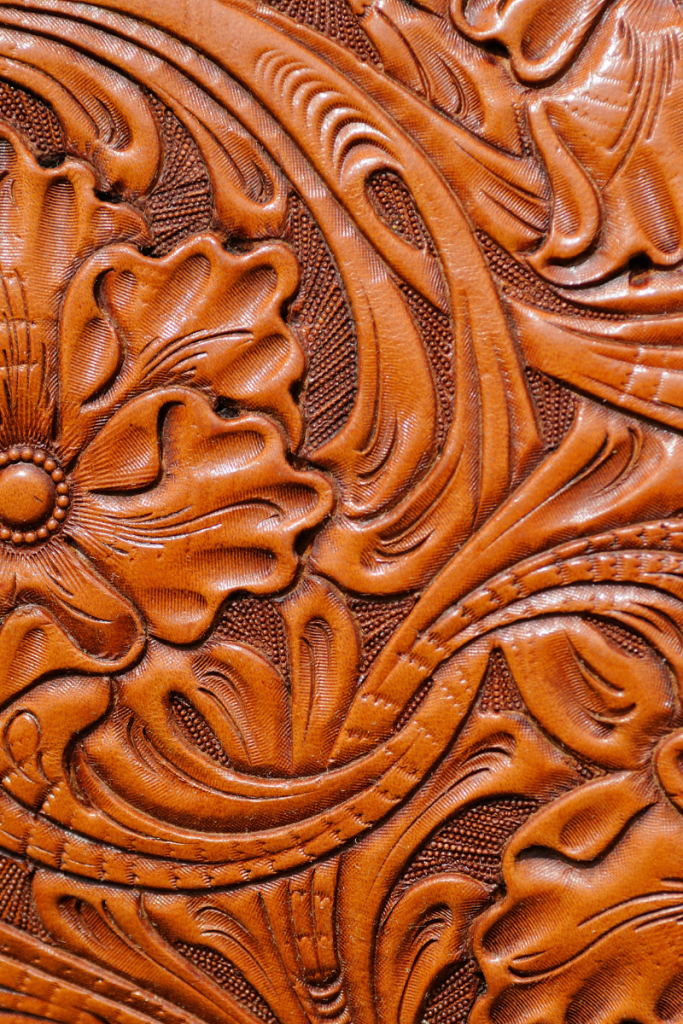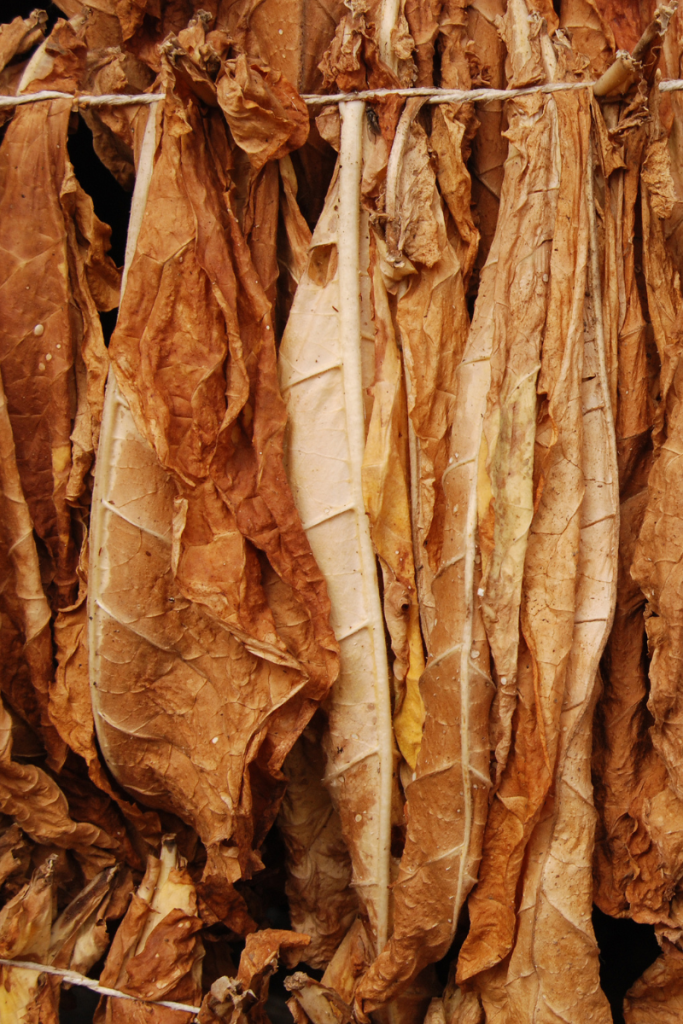Part II: What Exactly Is Amber? (And Other Scents You Might Know by Name—But Not by Smell)

In Part I, we broke down bright, floral, and citrusy stars like bergamot, ylang ylang, and neroli—the notes that sparkle at the top of a fragrance. But now we’re getting into the good stuff: the deep, sensual, and mysterious base notes that linger long after the first spritz.
These are the scents that give fragrance its depth, warmth, and staying power—and the ones most likely to make you feel something, even if they are lesser known scents.
Amber
In fragrance, amber is a fantasy note, crafted from a blend of ingredients like vanilla, labdanum, benzoin, and tonka bean. The result is warm, sweet, musky, and slightly powdery—a comforting, golden aroma that gives perfumes their depth and longevity.
Leather
“Leather” in perfume is an evocative scent, created using notes like birch tar, labdanum, and synthetic blends to capture the rich, smoky aroma of real leather—without soaking an actual jacket. It’s bold, sultry, and gives fragrance that irresistible edge.

Tonka Bean
Tonka bean smells nutty, creamy, and warm, with a soft blend of vanilla, cinnamon, and almond. It’s often used to round out deeper fragrances and give them a velvety finish. Its high coumarin content (a natural compound) gives it a dry, sweet, hay-like richness.
Labdanum
This resin from the rockrose plant smells leathery, balsamic, and ambery, and is often used to build the base of warm, musky fragrances. Labdanum gives perfume that ancient, resinous richness you’ll often find in more luxurious or incense-inspired blends.
Tobacco
Fragrance-grade tobacco smells nothing like cigarettes. It’s warm, sweet, woody, and smoky, often with honeyed or dried fruit undertones. Whether natural or synthetic, it brings a vintage sophistication to both men’s and women’s scents.

Oud
Oud, also called agarwood, is a rare and highly prized ingredient in perfumery. Oud is produced naturally under very specific circumstances: when an aquilaria tree, a species of evergreen, is damaged, the tree produces a resin to protect its core. Over time, what is essentially a mold, turns the tree’s heartwood into oud, a dark, woody, smoky, slightly sweet scented resin with a powerful, unique presence.
Final Sniffs
Now that you know the difference between neroli and patchouli, and why oud is kind of a big deal, you’re officially ahead of 90% of fragrance shoppers out there.
Whether you’re choosing a signature scent or planning a custom fragrance experience for your next event, this new scent vocabulary is your superpower.
Read more:
Part I: What Exactly Is Ylang Ylang? (And Other Scents You Might Know by Name—But Not by Smell)
The Language of Fragrance: A Beginner’s Guide to Fragrance Terminology
The Science of Scent: How Fragrances Influence Mood and Memory

